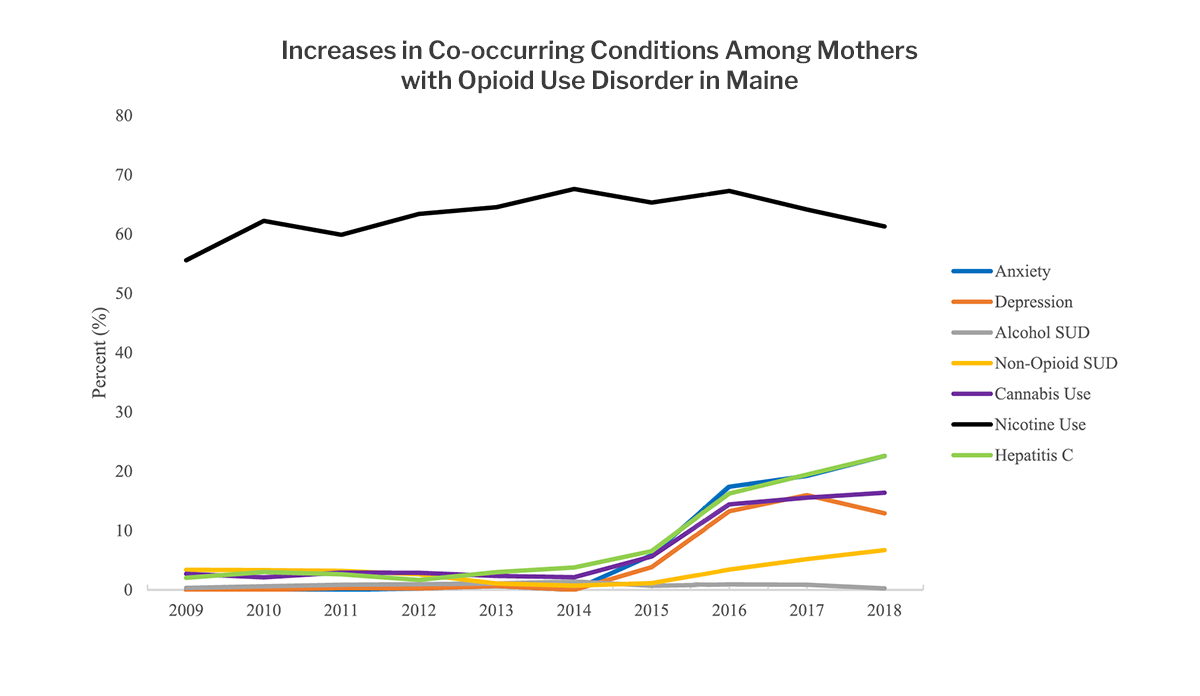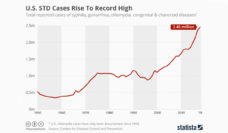Pregnant individuals who inject drugs often have multiple conditions that put their health at risk, including alcohol and tobacco use, hepatitis C infection, and mental health disorders. Hepatitis C is unique among the list of conditions as it is curable and easily identified with a blood test. Largely due to the opioid epidemic, hepatitis C infection rates among pregnant women in the US have tripled since the 1990s. This is a growing problem in Maine where mothers with opioid use disorder account for 1 in 29 deliveries.
As the figure shows, the University of Southern Maine found that the rate of hepatitis C infection among mothers with opioid use disorder rose from less than 5% to over 20% between 2009 and 2018. Because hepatitis C infections can be asymptomatic, pregnant individuals who carry the virus can unknowingly pass it to their infant during birth. In Maine, and across the US, approximately 7% of mothers with hepatitis C pass the virus on to their newborns.
Injection drug use is the most common source of hepatitis C infection due to needle sharing. The stigma surrounding injection drug use and fear of losing child custody discourages patients from openly reporting behaviors that signal to healthcare providers who is at risk and needs screening. Missing a diagnosis puts infants at risk of infection and mothers at risk for developing liver disease and cancer.
Screening for hepatitis C does not pose a risk to health but missing a diagnosis does. In April 2020, the Centers for Disease Control and Prevention heeded public health advice and now recommend universal hepatitis C screening as part of routine prenatal blood testing rather than relying on patients to disclose heavily stigmatized behavior. More attention to the array of medical concerns affecting this group will improve care for both mothers and children.
Databyte via Gabrielson, S., Carwile, J. C., O’Connor, A., & Ahrens, K. “Maternal opioid use disorder at delivery hospitalization in a rural state: Maine, 2009-2018.” Public Health. April 2020. Visualization by Tasha McAbee.














